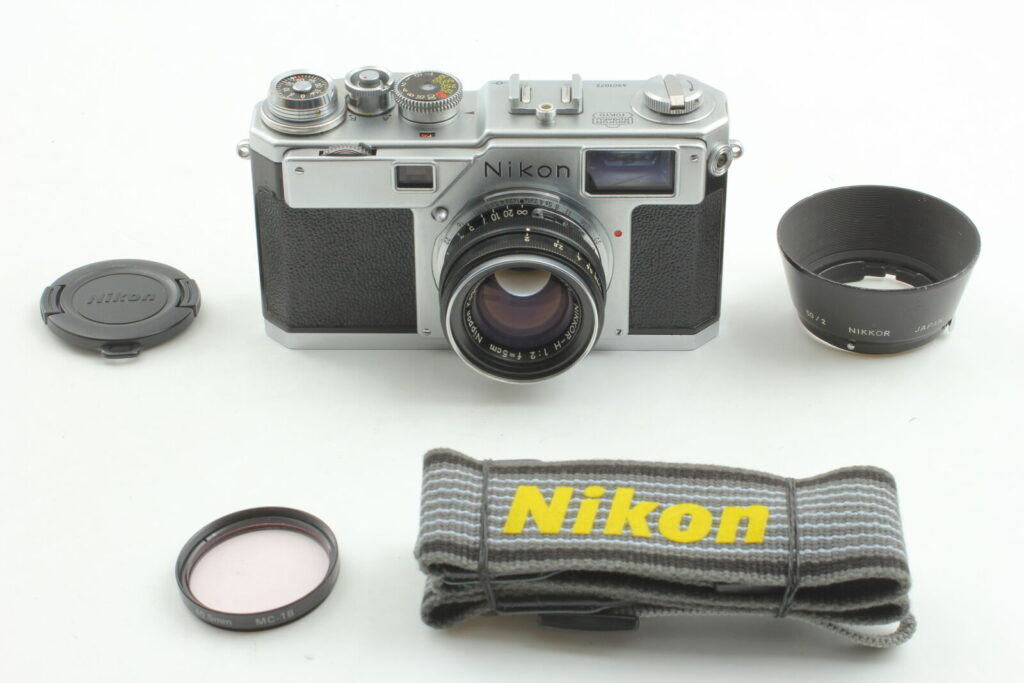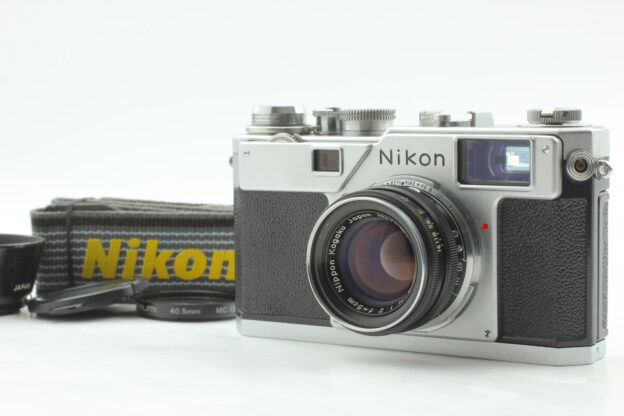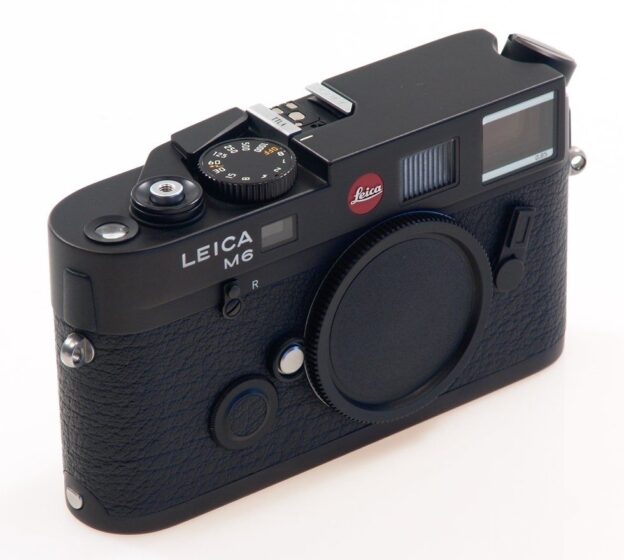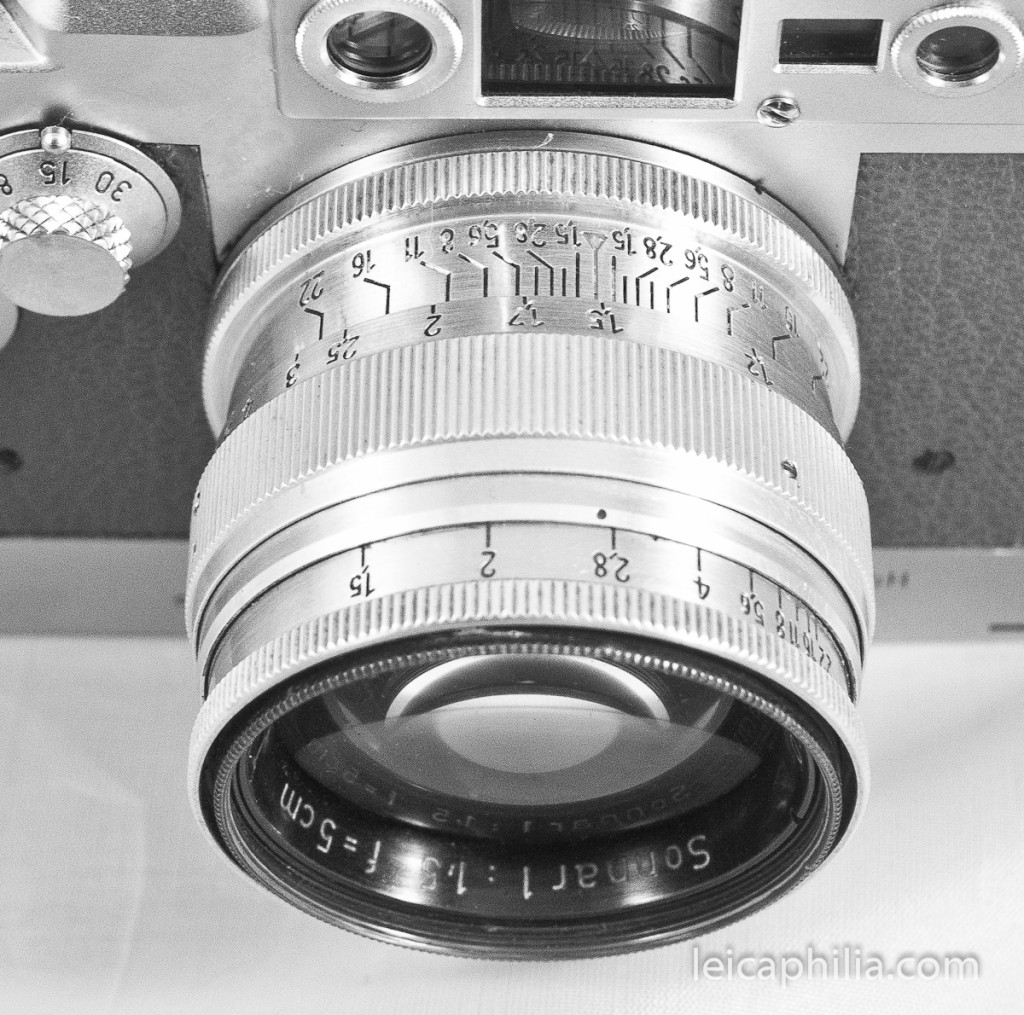I’ll admit. I’m a Nikon rangefinder admirer. I can’t for the life of me understand why they are so affordable at a time when Leica M’s are priced in the stratosphere and every other functional film camera seems to be selling at a premium. I’ve owned almost all of them along the way – S2, S3 2000, SP – and now the S4. They are all wonderful examples of Nikon mechanical engineering at its best.
The Nikon S4 is a very similar to the Nikon S3 but when new sold at a slightly lower price. It used a cloth shutter curtain (rather than titanium foil curtains) and it lacked the self-timer and motor drive lug of the S3. The viewfinder frame-line for 35mm lenses was also omitted. In all other respects, the cameras were identical. Think of it as either an upgraded Nikon S2 or a Leica M3 competitor. The camera had a short production run of less than 6,000 units from 1958 to 1960, so it’s rare compared to the other Nikon rangefinders. Unfortunately for the S4, it arrived at the same time as the revolutionary Nikon F to which Nikon (rightly) dedicated its advertising and resources. The S4 was essentially orphaned in the process, leaving it the terminal body in the S rangefinder line. Given that, you don’t find many with hard usage – most I’ve come across are shelf queens. Even so, and given its relative rarity, it doesn’t seem (as yet) command high prices in the market, although I suspect that will change in the future, given the fickleness of the current market. If you’re willing to import from Japan from a reputable dealer, you can find really nice examples, with the 5cm 1.4 or the f2.
The Nikon S4 was not exported to the United States, and you don’t see them often even though you can pick up a nice copy with a 5 cm Nikkor for +/- $700. The Leica equivalent – a single stroke M3 with period correct 50mm Summicron is going to cost you $2500-$3000. In all probability, the S4 will be in better mechanical condition (Old Nikon rangefinders rarely need the CLA usually required of older Leica M’s) and the optics less prone to fog. (The older Leitz optics have a tendency to fog based, apparently, on the type of lubrication Leitz used when assembling them). Most folks in the know consider the H-Nikkor 5cm f2 to be the optical equivalent of second version Summicron 50 f2 made by Leitz between 1956 and 1968. As for the S4 body, mine is “buttery smooth” (I hate that description, but in this instance it fits), much nicer than the average 60+ year old Leica.
*************

Apparently Nikon produced the S4 at the suggestion of David Douglas Duncan who wanted a no-frills rangefinder with a 1:1 viewfinder. I’ve lifted the following anecdotal story of Michael Beaucage from the excellent CameraQuest website about Duncan’s imput:
“In 1960 I had graduated from the U.S. Navy Photographic School in Pensacola Florida. My first duty for two years was at the Fleet Air Photo Lab, Utility Squadron Five, Naval Air Station, Atsugi, Japan. I was 19, away from the states for the first time, there for the next two years. Wide eyed and young. Thirty-five or so photographers and a wide variety of photographic opportunities. Black and white, no color.
I had an older Leica and wanted to upgrade: big decision, Canon or Nikon? At the Atsugi post exchange, I chose a Nikon SP, and really enjoyed the 1:1 view finder (bye, bye Leica), loved all the frame lines, disliked the Nikon camera back but got used to it. I really adapted to the Nikon RF and started looking for a second body once I had a complement of lenses. I considered the S3, but the S4 got my attention because it was inexpensive and I could use it when there was a lot of bad weather, dust, risk of damage or loss. A burner camera.
I thought it would be a good idea to visit Nippon Kogaku KK, the factory where the cameras were made. Scored an appointment, got a hotel room and the morning of the tour I strapped the S4 around my neck and put the SP in a case. Hailed a cab and was met at an industrial complex, single story, nothing fancy, this was 1960 so reconstruction was still happening. I was way outside my head as a Nikon “fan boy”. No problem with having been in the military. Never had any issues being a “gaijin.” We wore civvies off base. With the hair cut and black shoes, people knew who was in military. The appointment response was quick, I sent a short letter, they replied, and I answered. Special treatment? Always, the Japanese are courteous to a fault. My tour of the factory was less than three hours. No food or drink! 🙂 No photos of the factory, I would have felt funny snapping, and they might have talked to me.
The tour was just me and an English-speaking guide. I remember the assembly area, women working the line, the cameras were moved from person to person manually across a shelf with access on both sides. Interesting that the optical lab where lenses were being cast had dirt floors. I missed the polishing area, likely they moved me along.
The guide asked about my S4 and took me to an office where I was introduced to a man who interviewed David Douglass Duncan sometime between 1953 and 1955. I don’t remember his name, but he was 20-30 years older than myself. Duncan was a hero of mine when I first got interested in photography—1954. For Life magazine he was a Korean photojournalist, did the photo doc of Pablo Picasso among many other assignments.
Duncan used Leica mount Nikkors on his Leica. DDD discussed with a design engineer what he considered to be an ideal photojournalist tool. He wanted a 1:1 view finder—both eyes open when shooting. The simplest of viewfinder frame lines, 35mm, 50mm and a short telephoto lens, he was used to a 90mm, 105 is close enough. No self timer, it just gets in the way. Functional simplicity was the idea. When the S4 was being planned, the interview with DDD was part of the S4 design consideration which was to have a specialty camera for photojournalists. Nikon did not market the S4 to photojournalists as a specialty camera because the Nikon F was introduced and took all the marketing attention.
I kept the S4 when I sold the SP and purchased my first Nikon F in 1962. After eight years service I became a science photographer specializing in publishing in Berkeley California. Sold the S4 during the mad rush (early to mid ‘80s) by Japanese collectors looking mostly for anything Leica. I made a nice living with the Nikons, Kodachrome, and Norman strobe lights.“
Views: 3792































